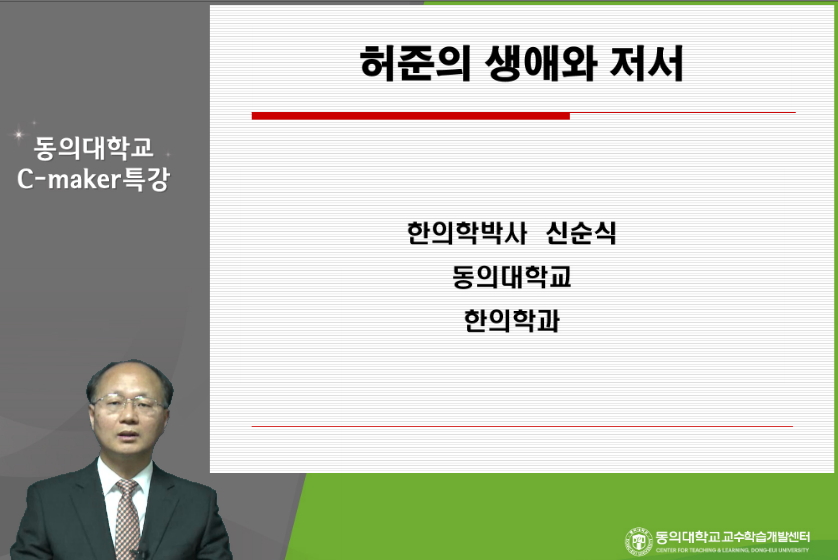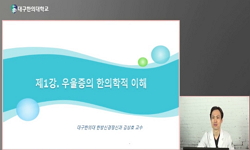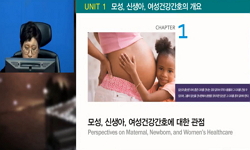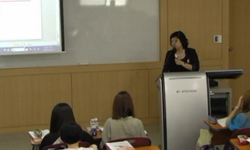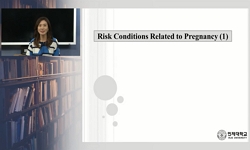목적 : 산후 6주 동안의 증상을 고위험군과 일반군을 구분하여 관찰하고, 치료 시 적용된 KCD 코드 분석, 삶의 질, 산후우울을 측정하여 산모의 증상 변화를 객관화 하고, 삶의 질 및 우울 변화...
http://chineseinput.net/에서 pinyin(병음)방식으로 중국어를 변환할 수 있습니다.
변환된 중국어를 복사하여 사용하시면 됩니다.
- 中文 을 입력하시려면 zhongwen을 입력하시고 space를누르시면됩니다.
- 北京 을 입력하시려면 beijing을 입력하시고 space를 누르시면 됩니다.
고위험산모와 일반산모의 산후 6주간 증상에 대한 전향적 관찰 연구 : 일개 한방병원 산후조리원을 이용한 산모를 중심으로 = A Prospective Observational Study on Symptoms of the High risk group and Normal group used Postpartum Care Center during Six Weeks after Childbirth in Korean Medicine Hospital
한글로보기https://www.riss.kr/link?id=T15117452
- 저자
-
발행사항
완주: 우석대학교 일반대학원, 2019
-
학위논문사항
학위논문(석사) -- 우석대학교 일반대학원 , 한의학과 , 2019. 2
-
발행연도
2019
-
작성언어
한국어
-
주제어
Postpartum ; Korean medicine ; VNRS ; KCD code ; EQ-VAS ; EPDS ; 산후 ; 한의치료 ; VNRS ; KCD코드
-
KDC
519.65 판사항(6)
-
발행국(도시)
전북특별자치도
-
기타서명
A Prospective Observational Study on Symptoms of the High risk group and Normal group used Postpartum Care Center during Six Weeks after Childbirth in Korean Medicine Hospital
-
형태사항
[xii], 82 p.: 삽도; 26cm.
-
일반주기명
우석대학교 논문은 저작권에 의해 보호받습니다.
지도교수:이은희
참고문헌: p.79-82 -
UCI식별코드
I804:45017-200000198167
- 소장기관
-
0
상세조회 -
0
다운로드
부가정보
국문 초록 (Abstract)
목적 : 산후 6주 동안의 증상을 고위험군과 일반군을 구분하여 관찰하고, 치료 시 적용된 KCD 코드 분석, 삶의 질, 산후우울을 측정하여 산모의 증상 변화를 객관화 하고, 삶의 질 및 우울 변화를 전향적으로 관찰하고자 하였다.
방법 : 2017년 9월 27일부터 2018년 1월 5일까지 출산 후 우석대학교부속한방병원 한방부인과 외래에서 한의치료를 받은 27명의 산모를 대상으로 우석대학교 부속한방병원 전공의인 두 연구자 (KPH, KMY)가 연구등록당일(산후 1주차)부터 6주차까지 매주 1회 문진을 통하여 주요 산후 증상 VNRS를 기록하고, 초기 산욕기 2주간 외래를 방문하여 한의치료를 받을 때마다 적용된 KCD코드를 수집하였다. 또한 산후 1주차, 산후 2주차, 산후 6주차에 각각 부종지수, 삶의 질, 산후우울정도를 평가하였다.
결과 : 결과는 다음과 같다.
본 저자는 2017년 9월 27일부터 2018년 1월 5일까지 분만 후 우석대학교한방병원 한방 부인과 외래에서 한의치료를 받은 27명의 산모들을 대상으로 산후 6주간의 증상에 대한 전향적 관찰연구를 실시하였고, 결과는 다음과 같았다.
1. 27명의 산모 중 고위험 산모가 17명(63.0 %), 일반 산모가 10명(37.0 %)이었다. 고위험군의 평균 연령은 35.12±3.66세였으며, 일반군의 평균 연령은 30.30±2.45세였다. 산후 2주일간 외래진료를 받은 27명의 환자의 총 치료횟수는 184회이며, 1인당 평균 6.81±1.88회의 치료를 받았다. 고위험 환자들의 치료횟수는 6.76±2.11회, 일반 환자들의 치료횟수는 6.90±1.52회로 나타났다. 두 군 간의 치료횟수는 통계적으로 차이나지 않았다(p=0.899).
2. 1주차에 평균 VNRS가 가장 높은 것은 부종이었으며, 2~6주차에는 관절통이 가장 점수가 높았다. 고위험군의 요통의 회복이 일반군에 비해 더디다.
3. 2주간 외래진료에서 사용된 상병코드는 35가지로 총 343회 사용되었으며, 다빈도 상위 10개 상병코드 중 가장 많이 사용 된 코드는 총 47회로 M2557(관절통, 발목 및 발)이었고, 나머지 9개의 코드 중 R601(전신부종), U684(비양허증)을 제외하여 7개의 코드가 모두 M코드(근골격계통)였다. 고위험군에서는 R601(전신부종-28회)이 가장 많이 나타났으며 일반군에서는 M2557(관절통, 발목 및 발-29회)가 가장 많이 나타났다.
4. ECW/TBW는 전체 대상자들에서 산후 1주차 평균 0.399±0.011에서 산후 2주차 0.385±0.008로 통계적으로 유의한 감소를 보였고(p<0.001), 산후 2주차 0.385±0.008에서 산후 6주차 0.383±0.006로 통계적으로 유의한 차이가 없었다(p=0.585). 산후 1주차와 2주차 사이 고위험군(0.403±0.011→0.387±0.006)과 일반군(0.393±0.070→0.383±0.01)은 각각 통계적으로 유의하게 낮아졌고(p<0.05), 산후 1주차 고위험군은 평균 0.403±0.011으로 부종 상태였고 일반군은 산후 1주차 평균 0.393±0.070으로 부종 전 단계였다.
5. EQ-VAS는 고위험군에서 산후 1주차 64.12±13.941에서 산후 2주차 69.35±18.155로 통계적으로 유의하지 않았다(p=0.234). 일반군은 산후 1주차 62.50±21.763에서 산후 2주차 74.00±9.661로 통계적으로 유의하게 증가하였다(p<0.05).
6. EPDS는 전체대상자들에서 모두 시간에 따라 통계적으로 유의한 차이가 없었다. 9점 이상인 환자는 1주차에 고위험군에서 6명(35.29%), 일반군에서 1명(10%)이며 2주차에는 고위험군에서 8명(47.06%), 일반군에서 1명(10%)이고 6주차에는 고위험군에서 5명(29.41%), 일반군에서 2명(22.22%)이었다.
결론 : 1주차에 평균 VNRS가 가장 높은 것은 부종이었으며, 2~6주차에는 관절통이 가장 점수가 높았다. 고위험군의 요통의 회복이 일반군에 비해 더디다. 근골격계 코드가 가장 많이 사용되었으며 고위험군에서는 R601, 일반군에서는 M2557이 가장 많이 나타났다. 산욕기 초기 고위험군의 부종지수가 일반군에 비해 높다. 또한, EQ-VAS는 일반군이 산후 2주간 유의하게 증가함에 비해, 고위험군은 유의하게 증가하지 않았다. EPDS는 유의한 차이를 보이지 않았으나 고위험군이 일반군에 비해 산욕기 초기 2주간 2점 이상 큰 수치를 보였고 9점 이상인 비율도 산욕기 2주간 2배이상 높았다.
다국어 초록 (Multilingual Abstract)
Purpose: The aim of this study was to observe the changes of women's postpartum symptoms, KCD codes that were used when participants were treated, the quality of life (by EQ-VAS) and depression scale EPDS over the first six weeks after childbirth. ...
Purpose: The aim of this study was to observe the changes of women's postpartum symptoms, KCD codes that were used when participants were treated, the quality of life (by EQ-VAS) and depression scale EPDS over the first six weeks after childbirth.
Methods: The participants of this study were 27 postpartum women that were treated in the Department of Obstetrics & Gynecology, at Korean Medicine Hospital of Woosuk University, from September 27th, 2017 to January 5th, 2018. The collection method of the postpartum numerical rating scale was to interview each participant once a week, who treated by Korean medicine by two residents (KPH, KMY) at Woosuk University Korean Medicine Hospital from the research registration day(first week) to 6th week after childbirth. During the first 2 weeks, the residents investigated the KCD codes when the participants were treated by Korean medicine. Also the residents evaluated edema index ECW/TBW, the quality of life (by EQ-VAS) and depression scale EPDS at 1st, 2nd and 6th week after childbirth, and compared the averages.
Results: 1. There were 17 high risk participants(63.0 %) and 10 normal participants(37.0 %). The average of high risk group was 35.12±3.66 and the average of normal group was 30.30±2.45. Over the first two weeks of postpartum period, the number of 27 patients` treatment was 184 and mean value was 6.81±1.88. The mean value of high risk group`s treatment was 6.76±2.11, and the mean value of normal group`s treatment was 6.90±1.52. But this difference was not significant statistically(p=0.899).
2. The VNRS of edema is the highest in the first week, and the VNRS of joint pain is the highest from the second week to the sixth week in all patients. The lower back pain score of high risk group restored slower than normal group.
3. 35 kinds of code were used and the total number of used KCD code was 343 times. The most used KCD code in the first 2 weeks was M2557(Pain in joint, ankle and foot-47 times). Of the remaining 9 codes, all seven codes were M codes (musculoskeletal system) except for R601( Generalized oedema-40times), U684(Pattern of spleen yang deficiency-18times). R601(Generalized oedema-28times) was most used in high risk group and M2557(Pain in joint, ankle and foot-29times) was most used in normal group.
4. During the first 2 weeks of postpartum period, the ECW/TBW of all participants significantly decreased from 0.399±0.011 to 0.385±0.008(p<0.001). From the 2nd week to the 6th week, the ECW/TBW decreased from 0.385±0.008 to 0.383±0.006, but this difference was not significant statistically(p=0.585). The ECW/TBW of high risk group significantly decreased from 0.403±0.011 to 0.387±0.006(p<0.05) in the first 2 weeks. The ECW/TBW of normal group significantly decreased from 0.393±0.070 to 0.383±0.011(p<0.05) in the first 2 weeks. The mean of high risk group in the first week of the postpartum period was 0.403±0.011 and they were edema. The mean of normal group was 0.393±0.070 and they were pre-edema. There was a statistically difference between high risk group and normal group in the first week(p<0.05).
5. The EQ-VAS of high risk group increased from 64.12±13.941 to 69.35±18.155(p<0.05) in the first 2 weeks. But this difference was not significant statistically(p=0.234). The EQ-VAS of normal group significantly increased from 62.50±21.763 to 74.00±9.661(p<0.05) in the first 2 weeks.
6. The difference of EPDS was not statistically significant between the first week and the sixth week in every participants. In the first week, there were 6 people(35.29%) in high risk group and 1 person(10%) in normal group that got more than 9 points. In the second week, there were 8 people(47.06%) in high risk group and 1 person(10%) in normal group. In the sixth week, there were 5 people(29.41%) in high risk group and 2 people(22.22%) in normal group.
Conclusion: The VNRS of edema is the highest in the first week, and the VNRS of joint pain is the highest from the second week to the sixth week. The lower back pain score of high risk group restored slower than normal group. The musculoskeletal system and connective tissue code was most used in all participants, R601(Generalized oedema-28times) was most used in high risk group and M2557(Pain in joint, ankle and foot-29times) was most used in normal group. The edema index was significantly different between high risk group and normal group in the first week(p<0.05). The EQ-VAS of normal group significantly increased(p<0.05) in the first 2 weeks but high risk group didn`t increase significantly. The difference of EPDS was not statistically significant between the first week and the sixth week in every participants. But high risk group was 2 points higher than normal group in the first 2 weeks. The ratio of 9 points or more of high risk group was more than twice than normal group in the first 2 weeks in the postpartum period.
목차 (Table of Contents)
- Ⅰ. 서론 1
- Ⅱ. 연구 대상 및 방법 3
- 1. 연구 대상 3
- 가. 선정 기준 3
- 나. 배제 기준 3
- Ⅰ. 서론 1
- Ⅱ. 연구 대상 및 방법 3
- 1. 연구 대상 3
- 가. 선정 기준 3
- 나. 배제 기준 3
- 다. 중도 탈락자 4
- 2. 연구 방법 5
- 가. 문진 6
- 1) 문진 방법과 시기 6
- 2) 고위험 산모의 구분 6
- 3) 산후주요증상 문진 항목 7
- 4) 언어숫자통증등급 9
- 5) 한국 표준 질병 사인분류(한의) 10
- 나. 체중 및 부종지수 측정 11
- 다. 삶의 질 평가 12
- 라. 산후우울지수 측정 13
- 3. 통계 분석 방법 15
- Ⅲ. 결과 16
- 1. 일반적 특성 16
- 2. 주요 산후 증상의 VNRS 변화 20
- 가. 전체 대상자들의 VNRS 변화 20
- 나. 고위험군의 VNRS 변화 23
- 다. 일반군의 VNRS 변화 25
- 라. 고위험군과 일반군의 차이 27
- 3. 산후 2주일 간 KCD 코드 분석 28
- 가. 전체 대상자들의 KCD 코드 28
- 나. 고위험군의 KCD 코드 31
- 다. 일반군의 KCD 코드 34
- 라. 고위험군과 일반군의 차이 37
- 4. 체중 및 부종지수의 변화 38
- 가. 전체 대상자들의 변화 38
- 나. 고위험군의 변화 40
- 다. 일반군의 변화 42
- 라. 고위험군과 일반군의 차이 46
- 5. 삶의 질 변화 47
- 가. 전체 대상자들의 삶의 질 변화 47
- 나. 고위험군의 삶의 질 변화 50
- 다. 일반군의 삶의 질 변화 54
- 라. 고위험군과 일반군의 차이 57
- 6. 산후 우울 변화 58
- 가. 전체 대상자들의 우울 변화 58
- 나. 고위험군의 우울 변화 61
- 다. 일반군의 우울 변화 64
- 라. 고위험군과 일반군의 차이 67
- Ⅳ. 고찰 69
- Ⅴ. 결론 77
- 참고문헌 79





